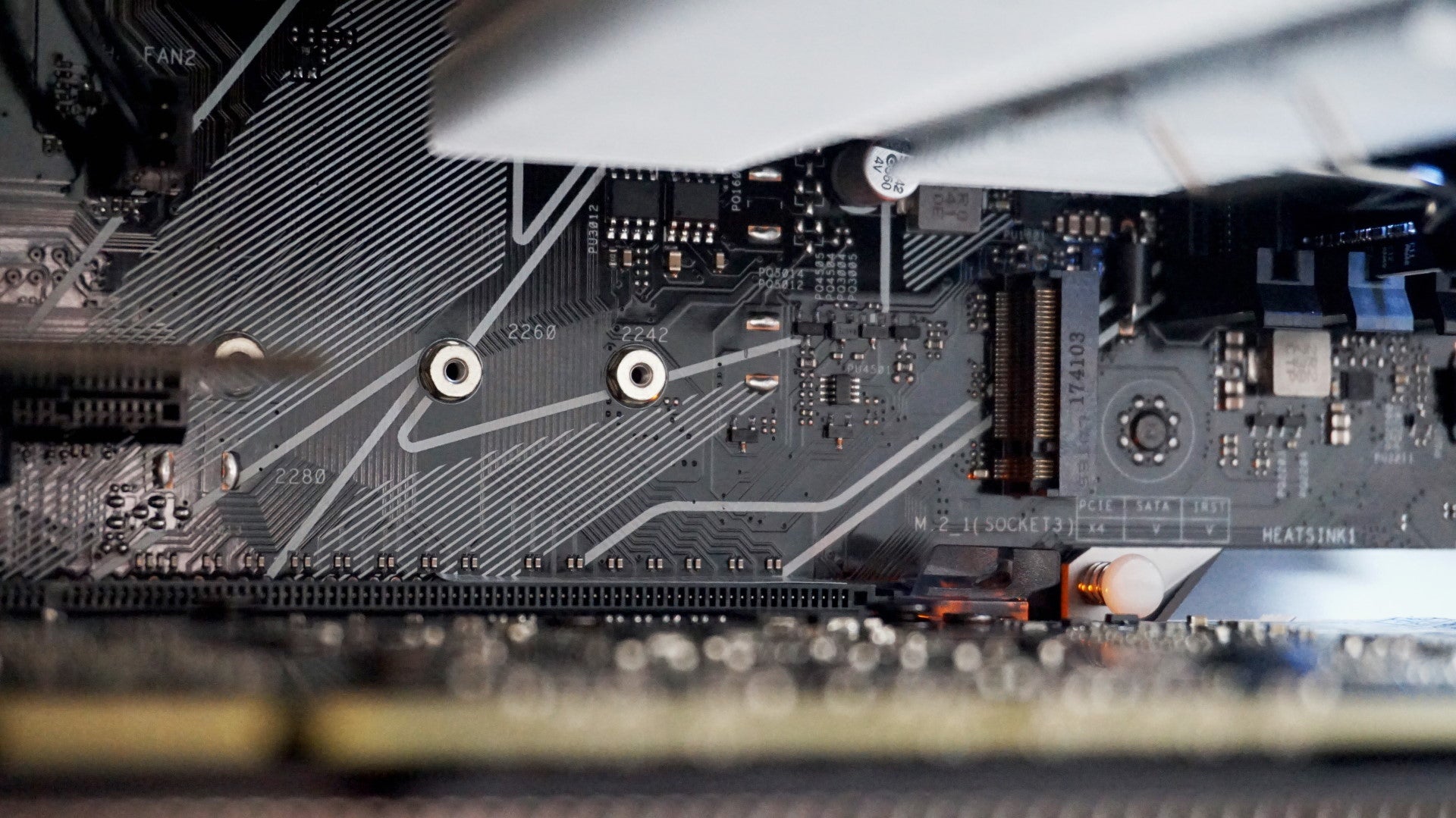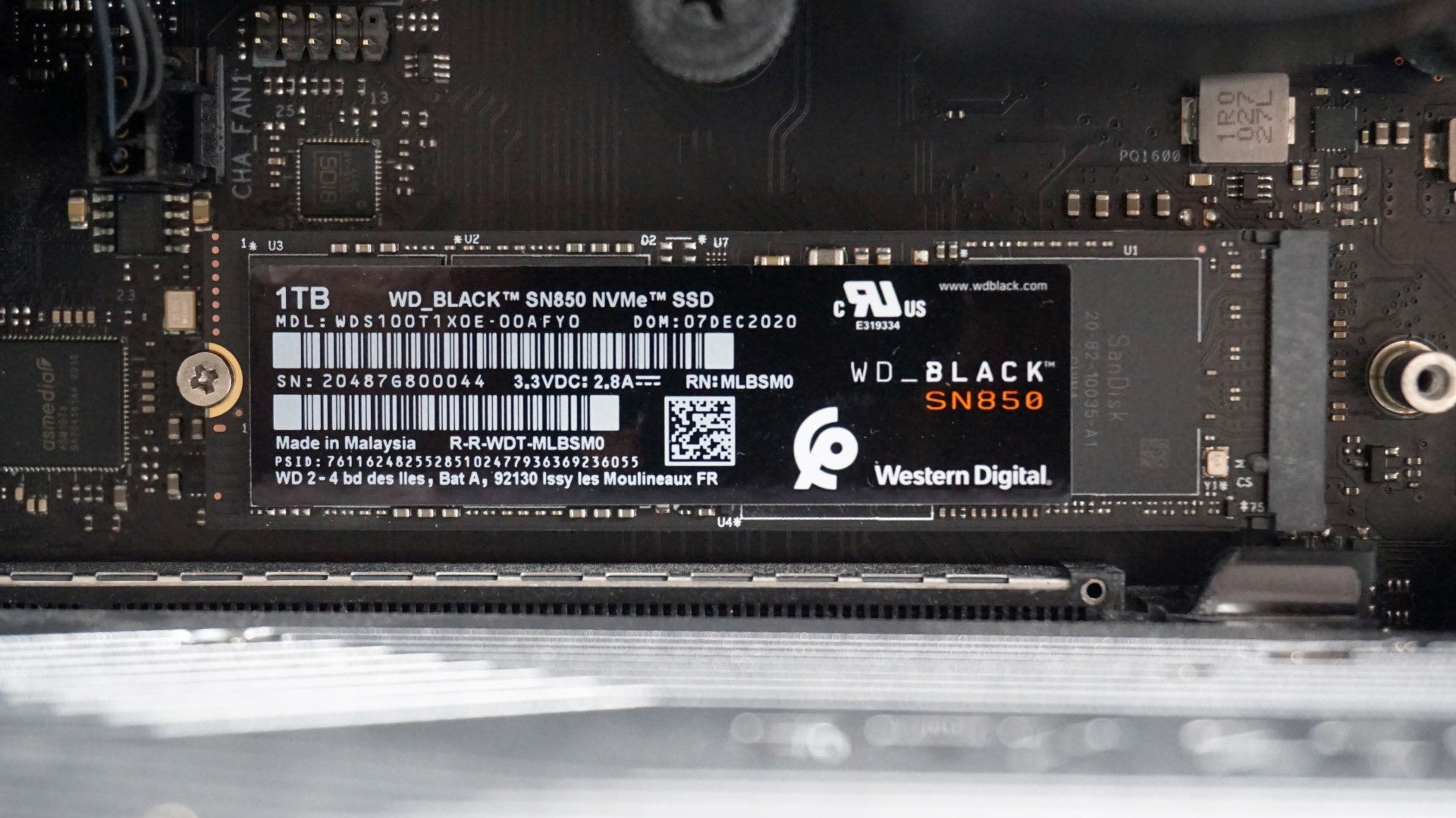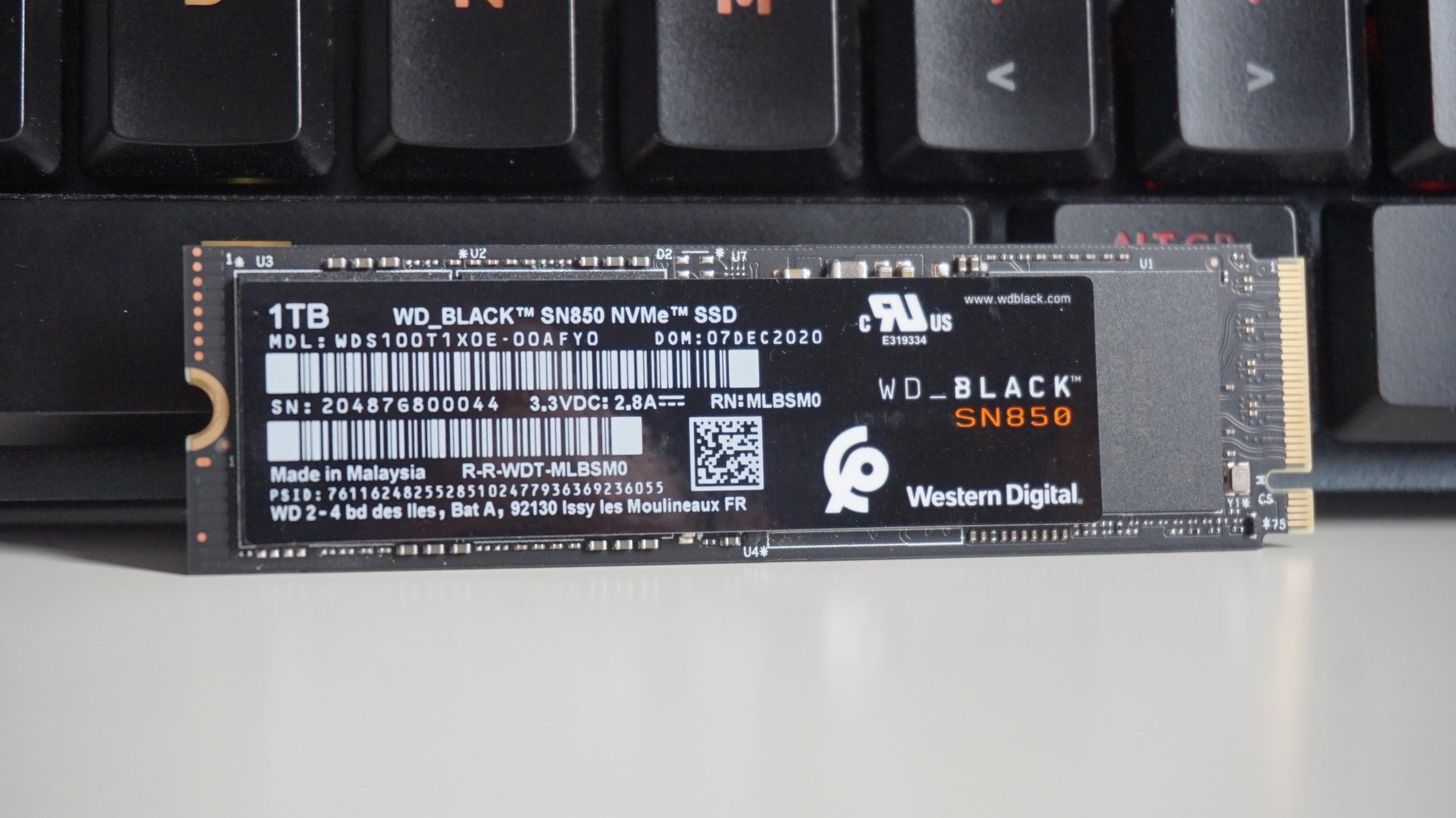The Black SN850 is WD’s first NVMe drive to support the new super fast PCIe Gen 4 standard, and goodness what a way to make an entrance. Not only does it offer significantly faster write speeds than Samsung’s 980 Pro, but it’s cheaper, too. Not by much, all told, and certainly not enough to take the sting out of buying a PCIe 4.0 SSD in general, but when you stack them up side by side, the WD Black SN850 is the clear winner here. Of course, it’s still reasonably early days for PCIe 4.0 at the moment, and you’ll need a compatible PCIe 4.0 motherboard and CPU to get the best out of it. At time of writing, this includes AMD’s B550 and X570 motherboards and their Ryzen 3000 / 5000 series CPUs, as well as Intel’s newly-released Z590 motherboards (although we’re still waiting on the launch of Intel’s 11th Gen Rocket Lake CPUs sometime before the end of March before we can call it a complete set here). There’s nothing wrong with sticking a PCIe 4.0 SSD in an older PCIe 3.0-based system, but you won’t be able to take full advantage of all the extra bandwidth it offers until you make that all-important upgrade. Indeed, PCIe 4.0 is set to become increasingly important for gaming PCs going forward, especially as we gear up for the arrival of Microsoft’s DirectStorage tech later in the year. This should dramatically speed up game loading times among other long-awaited improvements on the gaming side of things, and making sure your PC is PCIe 4.0 compliant is definitely something you should consider during your next upgrade. As I mentioned above, PCIe 4.0 SSDs still demand quite a premium over their PCIe 3.0 counterparts at the moment, and the WD Black SN850 is no exception. The entry-level 500GB model starts at £117 / $119, for example, while the 1TB version currently goes for a rather eye-watering £192 / $229. That’s more than double the cost of my current NVMe recommendation, the stupidly good value WD Blue SN550, whose 1TB model can be had for just £95 / $100 right now. It’s a big ask, to be sure, especially if your PC isn’t kitted out with all the other PCIe 4.0 gubbins you need to make the most of it right now, although it’s still marginally better than the £125 / $130 (or even £203 / $230) you’ll have to fork out to get the same amount of storage on a Samsung 980 Pro. Still, if and when prices (hopefully) come down a bit to something vaguely more affordable, the WD Black SN850 should definitely be at the top of your list for your next SSD upgrade. I tested the 1TB model of the WD Black SN850, which also happens to be the one with the fastest sequential read and write time figures, rated for up to 7000MB/s read and 5300MB/s write. The former is true across all three of the SN850’s size capacities, but their sequential write times vary quite a bit, with the 500GB model rated for up to 4100MB/s and the 2TB version for up to 5100MB/s. It’s usual to see at least some variation like this across an SSD’s different sizes, but the 500GB model in particular is quite a bit slower than its 1TB and 2TB siblings. As such, the benchmark figures I’m about to talk about may not actually hold up so well for the SN850’s 500GB model - and its Samsung 980 Pro counterpart (which is rated for up to 6900MB/s read and 5000MB/s write) might actually be the better overall drive here. In the 1TB arena, however, the WD Black SN850 has the 980 Pro beat. When I put it through AS SSD’s sequential speed test, for example, the SN850 finished with a whopping score of 5932MB/s read and 5195MB/s write, which is quite a big improvement over the 980 Pro’s 5507MB/s read and 3979MB/s write results. Of course, sequential speeds are never a very good indicator of what you’ll actually see in everyday use, as programs and files are rarely written in neat, side-by-side blocks on your SSD. Instead, they’re chucked about all over the place, which makes random speed tests a much more accurate representation of what you’ll get during day to day tasks. In AS SSD’s random 4K test, for example, which measures how long it takes to read and write 1GB’s worth of tiny 4K files to the SSD, the Black SN850 came in with a nearly identical read speed of 78MB/s, putting it neck and neck with the 980 Pro’s 79MB/s result. That might not sound particularly sexy coming from its almost 6000MB/s sequential read speeds, but this is still pretty darn fast compared to what you get on other SSDs. Samsung’s newly-released 870 Evo SATA SSD, for example, tops out at just 42MB/s, for example, while a 970 Evo Plus only pushes it up to 55MB/s. But it’s the WD Black SN850’s phenomenal random write speed that puts this drive head and shoulders above its Samsung competition, and it’s by far the best results I’ve ever recorded for an NVMe SSD. Whereas the 980 Pro ‘only’ managed a random write speed of 179MB/s, the SN850 blazes ahead with 217MB/s (and an even nippier 245MB/s once you enable its special Gaming Mode option in WD’s SSD Dashboard software). That’s an incredible set of results - and the SN850’s Gaming Mode even lifted its random read speed to an identical 79MB/s, too. Together, they make for some great transfer speeds as well, and moving large files between drives has never been quicker. When I copied my entire 98GB Assassin’s Creed Odyssey folder from my old WD Black 3D NVMe SSD to the SN850, for example, it took just one minute and eight seconds - and an even more impressive 58 seconds with its Gaming Mode enabled. That’s less than a minute! For almost 100GB’s worth of files! Admittedly, this is a new test I’ve introduced to my SSD benchmarking for 2021, and so I don’t currently have any corresponding results for the 980 Pro at the moment. What I can do, though, is show you how that time stacks up to some of its SATA and PCIe 3.0 counterparts. For example, it took 4 minutes 23 seconds to copy the same folder over to the Samsung 870 Evo, and 3 minutes 22 seconds to copy it to the WD Blue SN550. That’s quite the jump, and could well be worth the jump in price alone if you’re regularly transferring and working with large files in your day to day professional life. Game loading times are faster, too, but the appreciable difference is a lot more modest compared to the time you’ll save moving files. Indeed, we’ll probably have to wait until the arrival of Microsoft’s DirectStorage tech before we start to see the true benefit of what PCIe 4.0 offers in this department, but in the meantime, waiting 5 seconds to load into Monster Hunter: World’s Ancient Grounds map is still a nice, if rather slight improvement over the 11 seconds I recorded for the 870 Evo, as is the 8 seconds it took to load up Shadow Of The Tomb Raider’s opening Cozumel location versus the Evo’s 13 seconds. In the grand scheme of things, though, I’m not sure the benefits you’ll see here are really going to be all that noticeable unless you’re making the jump from an old hard disk drive. Still, even if the WD Black SN850’s game load times aren’t quite as lightning fast as its transfer speeds or random read and write times, this is still an exceptional SSD that’s leaps and bounds ahead of its current competition. It’s not only the best NVMe drive I’ve ever tested, but it also sets a new benchmark for what to expect from PCIe 4.0 SSDs going forward. The fact it’s also cheaper than Samsung’s 980 Pro is just the icing on an already delicious cake - although I’d still advise waiting for prices to come down a bit more before taking the plunge.



